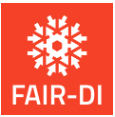Speaker
Description
Surprisingly, despite the rapid progress of machine learning in materials science, the prediction of optical spectra for crystalline materials remains underexplored, although this gap presents an opportunity to discover novel or tailored materials for various optical applications, including photovoltaic systems, photocatalytic water splitting, epsilon-near-zero materials, optical sensors, and light-emitting devices.
The review "Roadmap on Machine Learning in Electronic Structure" [1] highlights this absence, as optical spectra - such as the dielectric function $\varepsilon(\omega)$ or the refractive index $n(\omega)$ - receive little attention. The section on deep learning spectroscopy deals mainly with vibrational spectra, which are easier to calculate due to their dependence on nuclear motions.
In order to investigate the potential of predicting frequency-dependent optical spectra of crystalline solids with state-of-the-art deep learning models, we have created a database using ab initio calculations. Our database contains the frequency-dependent dielectric tensors for 9,915 crystalline semiconductors and insulators, from which all other linear optical properties can be derived.
Using this database, we show that deep learning models commonly used in materials science can effectively learn the spectral properties of semiconductors and insulators. This achievement does not require significant changes to the model architecture or a large database, even when predicting a high-dimensional vectorial quantity instead of a scalar.
Our model achieves very good quantitative agreement when evaluated on the test set. The predicted spectra faithfully reproduce significant features without non-physical artifacts such as discontinuities, significant noise, or extreme values, despite the lack of forced continuity or smoothness.
[1] Kulik, H. J. et al. Roadmap on machine learning in electronic structure. Electron. Struct. 4, 023004 (2022).
